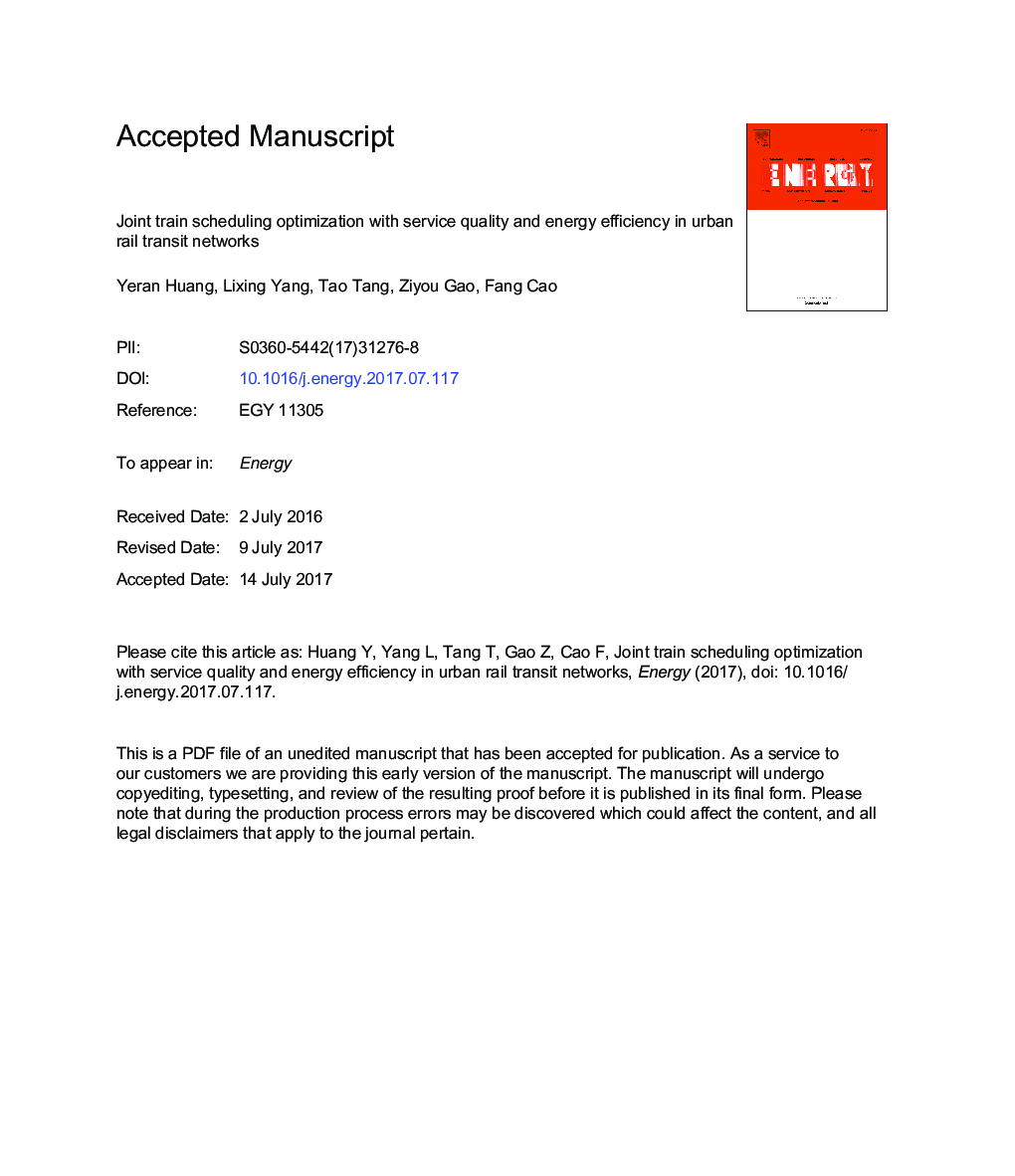| Article ID | Journal | Published Year | Pages | File Type |
|---|---|---|---|---|
| 5475563 | Energy | 2017 | 45 Pages |
Abstract
Focusing on service quality improvement and energy consumption reduction in an urban rail transit network, this paper proposes a multi-objective programming model to jointly optimize timetables through considering total passenger trip time and operational energy consumption. The time-variant quantities are adopted to represent the dynamic passenger demands, with which passenger boarding, alighting and transferring process are taken into consideration for calculating total travel time and variation of in-service train mass. To effectively measure the total energy consumption, three parts of energy consumption are specified, including traction energy consumption, auxiliary energy consumption and usage of regenerative energy. In particular, the regenerative energy is allowable to simultaneously reuse by traction trains on the same line or in supply regions of different lines nearby the same transfer station. A compromise for service quality and energy consumption from the viewpoint of system optimization is especially proposed through adjusting headways in different lines. To effectively solve the proposed model, a tabu search algorithm is designed to obtain near-optimal timetables of the whole transit network. With the practical data of Line 5, Line 10 and Yizhuang Line in Beijing rail transit network, the effectiveness of this model and solution method is demonstrated by a series of numerical experiments.
Related Topics
Physical Sciences and Engineering
Energy
Energy (General)
Authors
Yeran Huang, Lixing Yang, Tao Tang, Ziyou Gao, Fang Cao,
